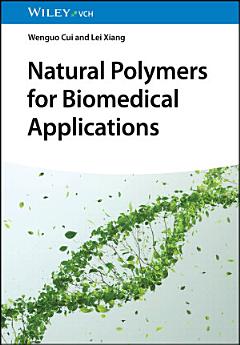Natural Polymers for Biomedical Applications
ກ່ຽວກັບປຶ້ມ e-book ນີ້
A natural polymer is one that forms from biosynthetic or biochemical processes typically found in nature, with corresponding advantages in biocompatibility and biodegradability. These advantages give natural polymers a range of applications, from the use of polysaccharides as structural components to the use of polyphenols as antioxidant active ingredients. In biomedical engineering they are clearly preferable to synthetic polymers in numerous cases, and their applications are more numerous every day.
Natural Polymers for Biomedical Applications offers a comprehensive summary of these polymers and their biomedical applications. It covers the sources, structures, and properties of polysaccharides, polyphenols, and polypeptides, as well as analyzing the latest advances in polymer-based biomedical technologies. The result has ramifications in a vast range of industries and research areas.
In Natural Polymers for Biomedical Applications readers will also find:
- Applications including drug and cell delivery, cell and organoid cultures, tissue regeneration, and more
- Detailed analysis of alginate, cellulose, quercetin, silk fibroin, and many others
- A logical, easy-to-use structure to facilitate rapid access to pertinent information
Natural Polymers for Biomedical Applications is ideal for materials scientists, polymer chemists, biochemists, and any researcher or professional in biomedical or pharmaceutical industries.
ກ່ຽວກັບຜູ້ຂຽນ
Wenguo Cui, PhD, is a Professor at the Shanghai Institute of Traumatology and Orthopaedics, Ruijin Hospital, Shanghai Jiao Tong University School of Medicine, Shanghai, China, as well as group leader of Regenerative Biomaterials. He has worked extensively on the development of novel biomaterials and nanomaterials for tissue regeneration, drug delivery, and disease treatment, and his awards and honors include the Fundamental Bone Research Scholar award from the Chinese Medical Association and the Huaxia Medicine Award, among many others.
Lei Xiang is a doctoral candidate in medicine at the Shanghai Institute of Traumatology and Orthopaedics, Ruijin Hospital, Shanghai Jiao Tong University School of Medicine, Shanghai, China. His research concerns novel biomaterials and nanomaterials for tissue regeneration, as well as treatment for sports medicine diseases.





